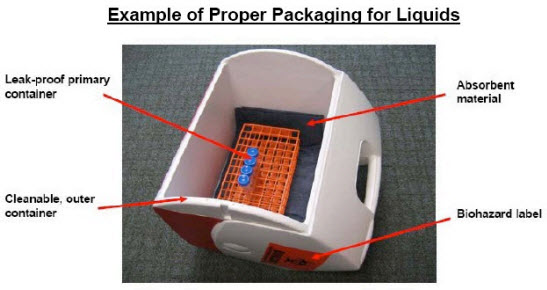Biosafety
The use of analytic flow cytometers and, especially, aerosol-generating sorters with samples that contain viable infectious organisms presents a serious infectious risk to the Facility users and staff. With the analytic flow cytometers, the main problem is with contamination of external surfaces or a sample spill onto a work surface or floor in an environment not set up to handle this. This is especially true in our Facility where there is high traffic around the instruments. With the sorters, it is this, as well as, the possibility for tremendous uncontrolled aerosol generation.
We require a copy of your SCHEDULE F for any biohazardous materials brought into the core.
ANALYZERS
All areas of the flow core that house analyzers are now designated as BSL2 areas, and all samples should be handled and treated as BLS2 at all times.
The investigator must comply with the following rules:
- PPE – latex/nitrile gloves, lab coat and closed toe shoes are to be used at all times.
- Transport – Samples are to be transported to and from the analyzer rooms in an approved biosafety transport container – see details below.
- Spills – If any sample is spilled in the room it is to be reported to Facility staff and cleaned up using bleach.
- Disposal – No samples or other contaminated materials are to be disposed of down the sink.
Any contaminated materials should be discarded into the red biosafety bag provided.
Left over samples are to be returned to the user’s lab using the approved transport container.
- Cleaning – When finished running your samples, follow the cleaning procedure posted on the instrument.
SORTERS
The use of biohazardous samples on the sorters is much more of an issue than with the closed system analyzers. In sorting, we are intentionally generating an aerosol. Under most conditions, the aerosol is more or less controlled but some are always generated that drifts away from the instrument. When the stream hits a solid surface – as may happen when there is a partial clog in the nozzle tip – the amount of aerosol that can be generated is tremendous.
The sorting of viable biohazardous materials (including any primary human cells) may NOT be performed on the Melody.
BSL-2 designated samples may only be sorted on the FACSAria II and FACSymphony S6 by trained staff.
To schedule a sort: Log into iLab and fill out a Cell Sorting Request. You will then be contacted by the flow core to setup a day and time for your sort. If you have any questions about your sorting of biohazardous samples please contact Ramiro Diz. For more information contact EHS Biosafety and refer to UNC Viral Vector section.
Transporting Samples to the Flow Facility
- All transfers that involve entry of a common corridor require the following packaging and labeling: At a minimum, all materials are to be double-packaged prior to transport. At least one layer of packaging must be leak-proof if the material is a liquid. Example: placement of a leak-proof Vacutainer blood tube in a tube rack, and then placing the rack in closeable carrier (e.g. Igloo cooler).
- For packages containing liquids, absorbent material must be included in sufficient quantity to absorb the entire contents of the primary container should a spill occur.
- The outer sides of the carrier must be sprayed (prior to transport) with a disinfectant that is effective against the potentially infectious material(s) used in the laboratory. Hard plastic exteriors are best for clean ability. Once this step is complete, the outer surfaces of the carrier are considered safe for handling with bare hands. Lab coats and gloves should not be worn when transporting carriers outside the laboratory.
- A biohazard warning label shall be applied when applicable to the carrier to communicate the potential hazard of its contents. Any potentially infectious material (e.g., human blood, unfixed human tissue, bacterial culture) would require the biohazard label.

Note: It is also acceptable to have sample in capped 5 ml FACS tubes, on ice and inside a small lidded, styrofoam container; this styrofoam container must be placed inside the closable carrier (e.g., Igloo cooler) with absorbent material for transport.